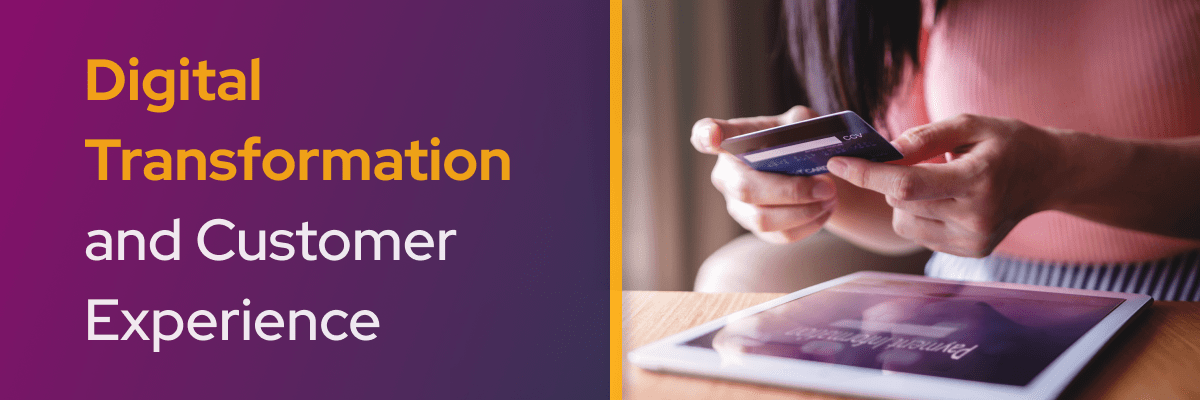“Consumers by definition include us all. They are the largest economic group, affecting and affected by almost every public and private economic decision. Yet they are the only important group… whose views are often not heard.”
These are the words by John F. Kennedy on March 15, 1962. The statement is true till the part where he mentions the significance of consumers. However, when it comes to ‘being heard’, perhaps a lot has changed since his times. Today, the voice of the customers is not just crucial, but also has the power of turning businesses into brands and can even make a brand lose its business forever.
With more and more brands striving to become customer-centric, this year on World’s Consumer Day, we bring you the factors that govern the customer experience strategy of the brands along with some words of wisdom by industry experts at CxBuzz.
Top 4 factors Driving Customer Experience Strategy in Today’s Time
Data-Driven Customer Solutions
Customer data is more than just ‘information about customers’ today. It is that golden treasure that is now enabling businesses to survive and thrive in the devastating pandemic phase. With brands now focusing on the complete customer journey and trying to achieve a holistic approach towards all the touch-points, data has proved to be an asset that is offering a competitive advantage to brands along with allowing them to leverage various technologies to build customer-centric solutions and increase revenue.
Brands like MoEngage, Actian, Consum are leveraging data-driven solutions to make their customer journey more holistic and offer the best services to their customers. Along with the real-time data insights, it is the data in the form of reviews, ratings, and feedback, which is also marking a major territory in the customer experience strategy of the brands.
“Ratings and Reviews have been on the rise over the past few years but certainly exploded in 2020. Brands have been scrambling to keep up with the online ratings and reviews found on most retailer sites, including Amazon. Rating and Reviews have become another touchpoint/channel in how consumers reach out. Within Blue Diamond, this data is collected and mixed in with all the Voice of Consumer touchpoints. This data goes into our advanced analytics on how products are performing and is circulated throughout our enterprise.
It is critical for consumers to know that Brands are listening and care about the consumer’s experience. Brands want to be as transparent as possible. This includes two-way communication within the Ratings and Reviews.”, said Lisa Diehl, Manager Consumer Advocacy at Blue Diamond Growers.
Digital Transformation and Customer Experience
Covid-19 has certainly played a role in pushing the brands towards digital transformation. However, the urge to become fully digitalized has always been their businesses since they realized the power of technology to drive growth. In today’s scenario, customer experience has become one of the crucial pivots around which the digital transformation strategy of the brands revolves.
Zack Hamilton from Medallia brings the focus on foundational principles that have helped the major brands to accelerate their digital transformation strategy and customer feedback holds a significant place in it.
“… Foundational belief in acting on customer feedback & signals to optimize and innovate, strong Executive Sponsorship/Leadership, active cross-functional team inspired to build experiences, and a culture that is based on ‘fail fast.’”
Gart Capote, (Consultor, Autor, Instrutor e Referência em Gestão por Processos (BPM) e Customer Experience (CX) further makes a valid point when it comes to analyzing the relationship between digital transformation and customer experience.
“Digital transformation is much more than just turn products and services into a sort of online “digital twin”.
The biggest challenge is not to transfer analogical things to the digital world, actually, this is the easiest part. The real challenge is to constantly understand our customer’s needs, and thus, deliver real value. This was the challenge before and this still the challenge for now.
When we think about digital transformation, it is natural to instantly imagine some kind of online service or any other remote interaction. But, if we dive a little deeper, we’ll discover that the riddle has its answers in the human heart and mind. After all, as many CX experts constantly remind us all: the customer experience is the most important process for every business. When, from the customer’s perspective, we understand the “jobs to be done”, everything else gets clearer, including new solutions, better journeys, desired services, and better products.”
Gart’s one piece of advice to business leaders would be to continually learn and update the understanding of what really matters to the customers.
Technology has been a savior for businesses to survive the pandemic wave, where customer experience became the most significant factor for the brands. Sasson Tamar, Director of Client Success at Revuze puts it out in a clear and precise way:
“Many businesses are facing an unprecedented crisis as a result of the pandemic. Since the onset of COVID the CS role has been more important now than ever before. Our customers trust us to offer guidance on how to turn a range of different strategies into business opportunities. For example, many of our client’s leverage product reviews to better engage with their audience digitally and offer more personalized customer experiences.
Just as digital transformation changed the way companies interact with their consumers, we, CS teams, interact differently with our customers. For example, Zoom meetings, in a way, have helped break down barriers because the camera invites you into each other’s homes, and this has created a new and authentic way of connecting. As difficult as social distancing is, it’s important to recognize the opportunities offered in our digital world and build personal relationships around it – it’s better for the soul and for business.”
Also, when it comes to specific technologies, Artificial Intelligence, Machine Learning, and Cloud-based technology have been the top contenders for digitalizing brands and enabling them to accelerate their customer experience. More and more companies like Pypestream, Yum Brands are adopting AI-based solutions to boost their customer service.
Avdhesh Kumbhar, founder of ASK Advertising mentions that there could not have been a better time for brands to adopt technologies like AI.
“…I believe Brands are at the stage of adopting AI into the culture, and once they do, the outcome unbelievable.
AI and VR will make the eCommerce industry accessible as per one’s needs and will allow us to test all before a purchase is made. I believe AI will enhance the skillsets
and the way we represent things. I can’t wait to shop on Amazon or any other eCommerce platform through a TV App. I mean, check, test how it looks, and order right away.”
Consumer Sentiments – The Role of Emotional Intelligence For Businesses
A lot of surveys showed that consumer sentiments are significant now more than ever. What emotions govern the purchasing desire of customers, what’s the mood of the customer after receiving the product and service, or how they felt about the product, helps brands to improve not just their product/service but also generate leads. Consumer behavior, in other words, has become the key to accelerate sales.
A measurable shift has also occurred in the past one year. With pandemic, hitting the world, the way consumer sentiments were looked upon changed drastically and brands too had to change their strategy towards it.
Sasson while commenting on consumer sentiments during 2020 and expectations for 2021 emphasized the role of technology to bring in loyalty and enhance the overall customer experience.
“COVID-19 accelerated our adoption of digital technologies, and this has directly impacted consumers’ interaction with brands. More consumers today are inclined to write product reviews, especially around the post-purchase experience (delivery, condition package arrived in, customer service). The rise of online consumer reviews will affect product sales well into 2021. We can expect this to drive more brands to adapt to shifts in consumer expectations, loyalty, and overall customer experience.”
Neal Topf, President at Callzilla too believes that customer rage continues to grow. For 2021, he states:
“…Our obligation as practitioners is to reduce wait times and to resolve the reasons why our customers contact us i.e. ensure greater satisfaction and that we fix the problem. To do so, we need to expand and improve self-service, we need to introduce automation to enable customers to interact with our brands without having to endure long queues, and we have to keep the resolution as the core tenant of what we do; it is not sufficient to just be nice to our customers if we’re not fixing the problem. We must fix the problem and do so at the first time we are contacted, when possible.”
However, Esteban Kolsky, Chief Evangelist for CX at SAP, believes that the expectations rather than changing have remained constant- it is just that the horizon of customer sentiments have expanded and have become more inclusive.
“Actually, when it comes down to what the sentiment is – consumer sentiment towards brands did not change a lot. Expectations continue to be the same as they were: know me, understand me, personalize my interactions, learn more about me, rinse and repeat. This has remained the constant.
However, consumer sentiment has expanded to incorporate empathy and humanity as part of the expectations for brands. In spite of the many brands who had been advocating for this over the years, we needed a catalyst event to make the shift more permanent. I am not sure if this change will remain long-term – but it is a welcome change in the short term.
Brands are responding by making sure their empathy and approach to social issues is front and center and began to align that with delivery to customers. While still mostly in the messaging stage, we are seeing socially responsible brands like Patagonia take a leadership position in showing the rest of the brands how social responsibility and empathy work.”
Personalization- The New Strategy for Long-term Engagement
Brands like Sephora, Harps Food, Brinks Home Security and more have their inclination towards offering personalized experience to make customer engagement better and more immersive. Including personalization in their customer strategy, businesses are undeniably giving the core seat to customers, leaving little or no chance at all for the customers to feel ‘not a part’ of the brand. In addition, this one factor brings more value as personalization targets the most significant customer sentiment.
Mary Poppen, Chief Customer Officer for Glint at LinkedIn told CxBuzz about how personalization and customer-centricity has been a part of customer strategy for long. It’s just that it has become more significant in the present times:
“I think they have always been relevant and quite important to an organization’s competitive position. The difference is automation and technology advancements are making it easier than ever before to create personalization while at the same time attaining scale and efficiency. Operating margin can be an obstacle to personalization, but if automation and technology are used effectively, an organization can attain positive results in both.”
Poppen also makes it clear while talking to CxBuzz that if companies want to improve their personalization strategy, they need to look into the customer journey for the organization.
“…Understand the moments that bring the most value and target personalized outreach and delivery around those first. You can then extend to other moments in the journey and add automation along with personalization to increase scale and profitability.”
The Final Words
The year 2020 was devastating for businesses. However, it was also an opportunity for the brands to locate the cracks in their operations and systems. Ayelet Baron, Forbes 50 Global Female Futurists believes that it is time “to get to the root cause” and address the issues “with fresh perspectives”.
The new trendsetters included the digital transformation of even the small-scale businesses and data-driven solutions that led the efforts of the brands to become more customer-centric. Also, now when organizations understand the significance of the customer-voice in terms of sentiments, feedback, ratings, and reviews, it won’t be wrong to say that customers hold the horizons at every level and drive the real growth for businesses.
With technology, customer-data, and new inclusions in the customer experience strategy like personalization and customer behavior, the business world can rest assured that it is ready to face the challenges and see a silver light even among the darkest of the clouds.









